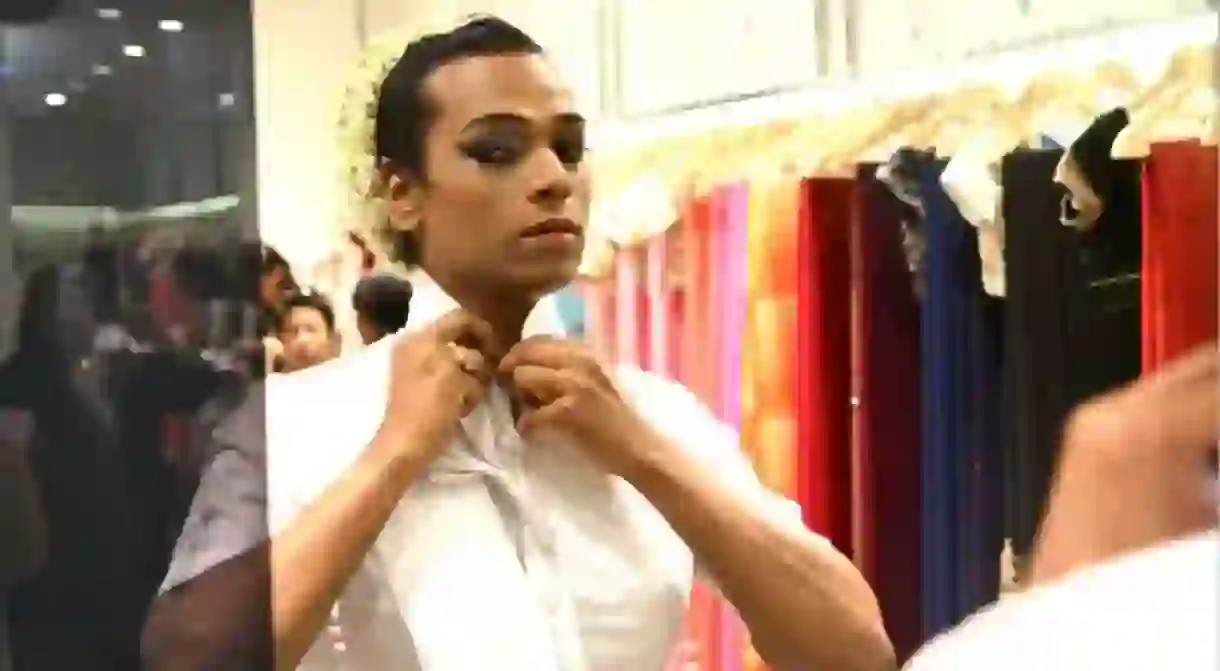Q&A With Abhina Aher, Founder Of Mumbai's Transgender Dance Troupe

Dancing Queens is a transgender-led dancing troupe formed in 2009 as a part of Queer Azaadi Mumbai. Over the years, they have used dance as a powerful tool of expression for breaking social barriers and advocating for transgender rights. Led by Abhina Aher, Urmi Jadhav and Madhuri Sarode, Dancing Queens is a powerful voice within the LGBT community, working relentlessly for the rights of sexual minorities.
Culture Trip Mumbai spoke with Aher about her dance, challenges and the larger transgender struggle in India.

CT: Can you tell us about the background and beginnings of Dancing Queens?
AA: To tell you the truth, even before Dancing Queens came about, we were all individually performing at small events such as marriages. At the time, around seven years back, everyone in the LGBT community was trying to generate resources for the Pride Walk. As a contribution from the transgender community, we decided to do our bit by putting up an entertainment program. Some time later, we came across a Marathi group called ‘Bin Baykancha Tamasha’ (Performance Without Women) where men cross-dressed and performed lavani (a folk dance from Maharashtra.)Watching them perform so well, we thought of organizing ourselves into a professional group, and that’s how our story began.
CT: How did you decide on the name Dancing Queens?
AA: We were actually not sure what to call ourselves. Just for fun, I thought that sexual minority people are called ‘queens’ so often. And we were dancing – so let’s call ourselves Dancing Queens. There was another name that we used for quite a few of our shows – ‘Natali Tumcha Sathi’ (I am decked up for you.) But the audience took to Dancing Queens and it became a huge hit, so that became the name of our brand.

CT: What are the challenges you face while running the troupe?
AA: Our biggest challenge has been lack of resources. I was very driven towards building this troupe, but there was just no support for a long time in terms of funding. Our dancers obviously expected to be paid for their time and effort, but we had no money and could not retain them. When we started, the dancers in our group were not professionals – they were used to dancing in dance bars, marriage parties, Ganpati pandals, etc. It was a big challenge to discipline and train them. The Indian society perceives transgenders as loud and menacing. It was difficult to ensure our members did not overreact in public, and thus get the audience to see us as artists without any preconceived notions.
Personally for me, it was a big task to convince my mother, who is an accomplished Marathi actor and dancer, to join our group. Her coming on board as a member sent very strong signals to the society. She advocated that if you as a family do not accept your child who is transgender, you are making them more vulnerable to the society. Today, she is a very big strength of our troupe.
CT: How do you see Dancing Queens as a part of the bigger transgender struggle in India?
AA: Dancing Queens is not just about dance – it is the collective of lives of all those people who came together to celebrate and entertain people despite their struggles. Each of our dancers has a personal story – they face a lot of stigma, sometimes from their own family, or are HIV positive or are forced to beg on the streets. And yet, they perform with happiness and spread the joy.
We use the language of dance to create a dialogue with the audience about sexuality, gender, family sensitization and transgender rights. Right from performing at small events to very recently at Godrej India Culture Lab, we are finally being recognized and getting wholehearted support from the audience.
Dancing Queens, Performance Highlights
CT: What are your future plans for Dancing Queens?
AA: Going forward, while we hone our dance performances, our focus is on creating employment opportunities for transgenders in India in corporations, or by setting up entrepreneurship ventures for them. We are also creating support systems for young transgenders who leave their homes, and older transgenders who don’t work anymore.
When I was growing up, there was no support from the transgender community and no one to go to. I really want transgenders who are coming out today not to go through the same issues I faced. We are fighting in full force for a brighter future.













